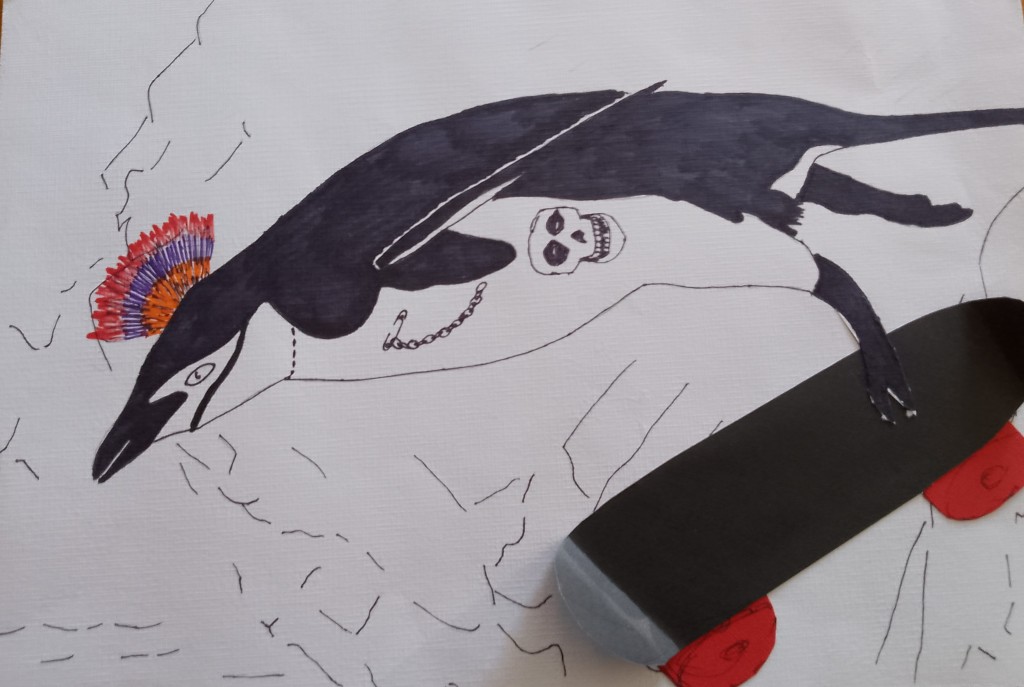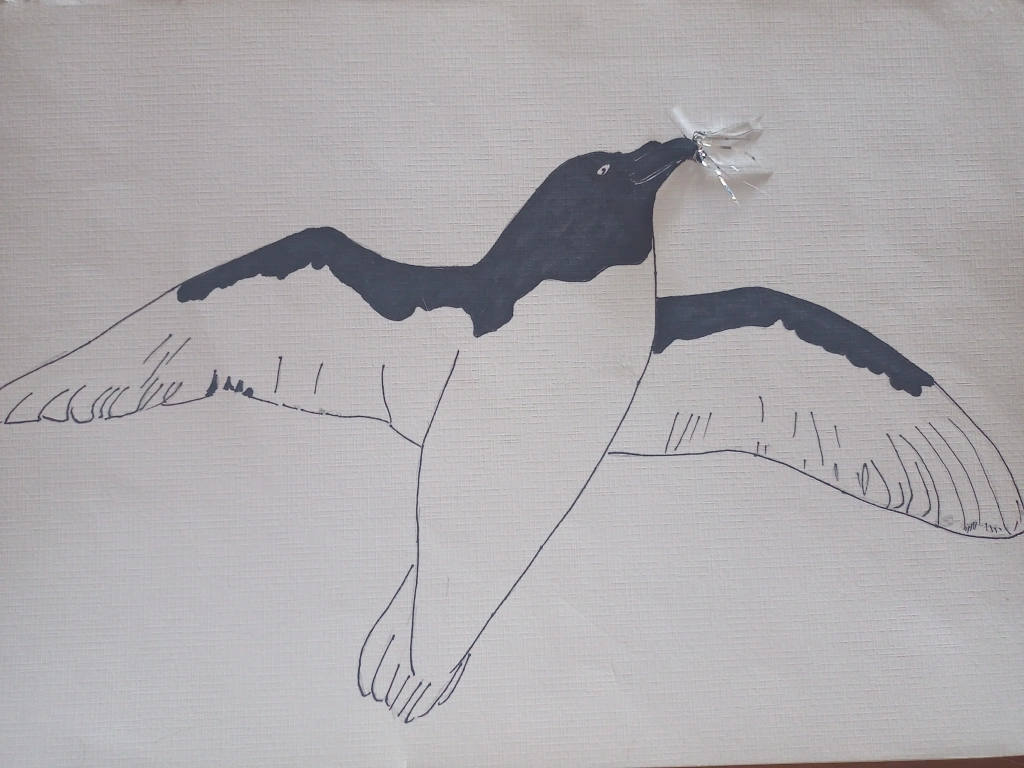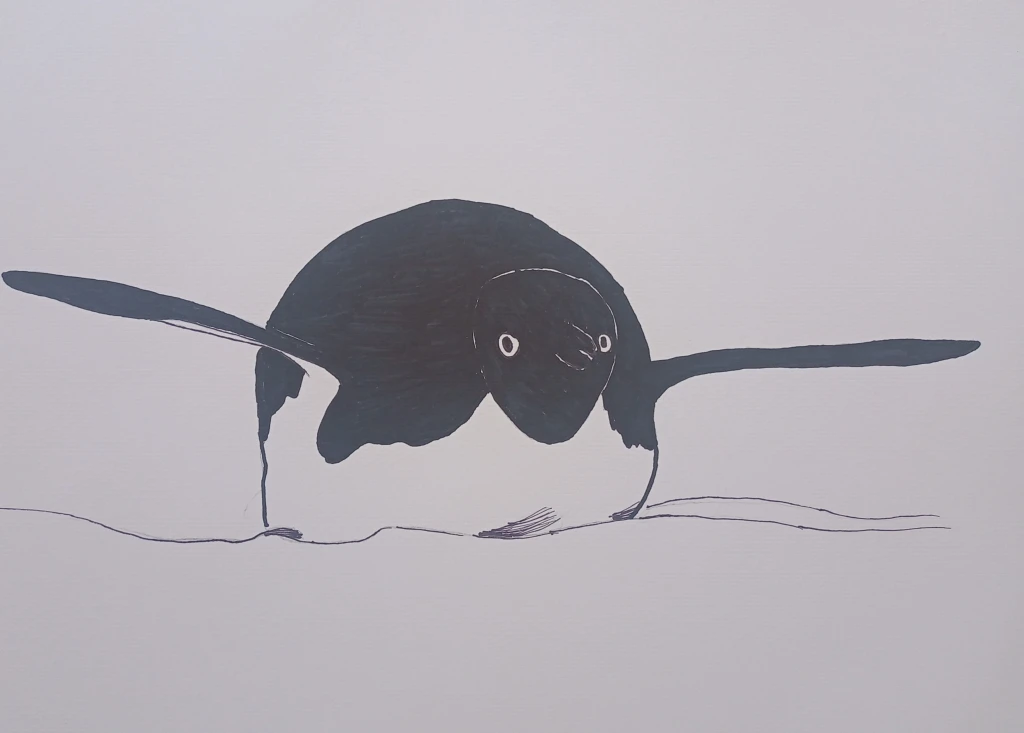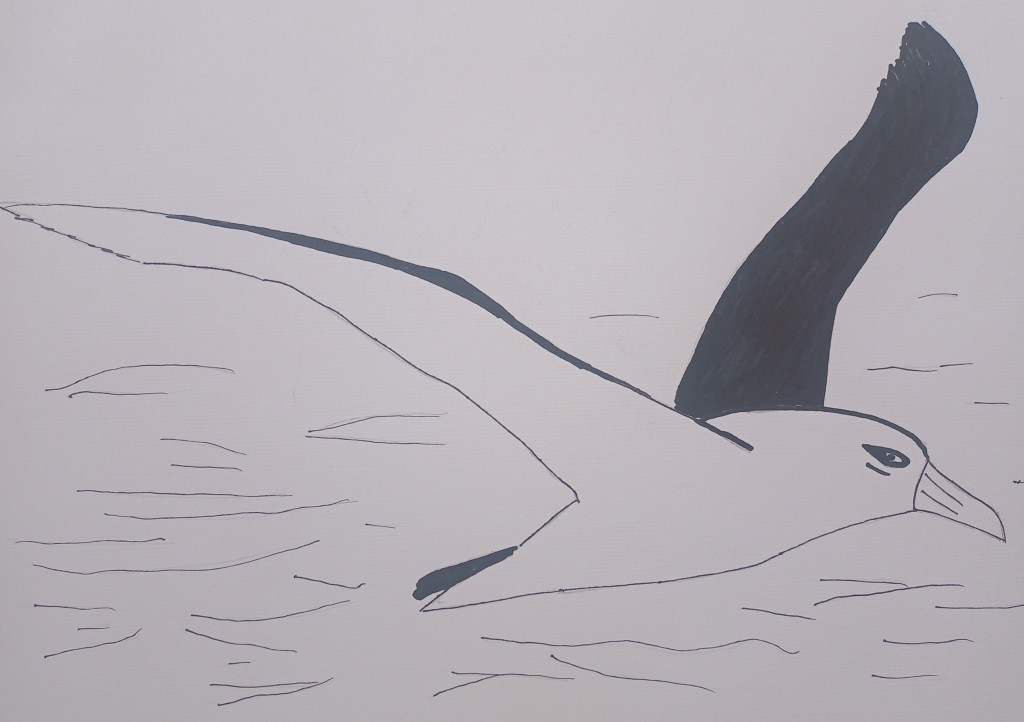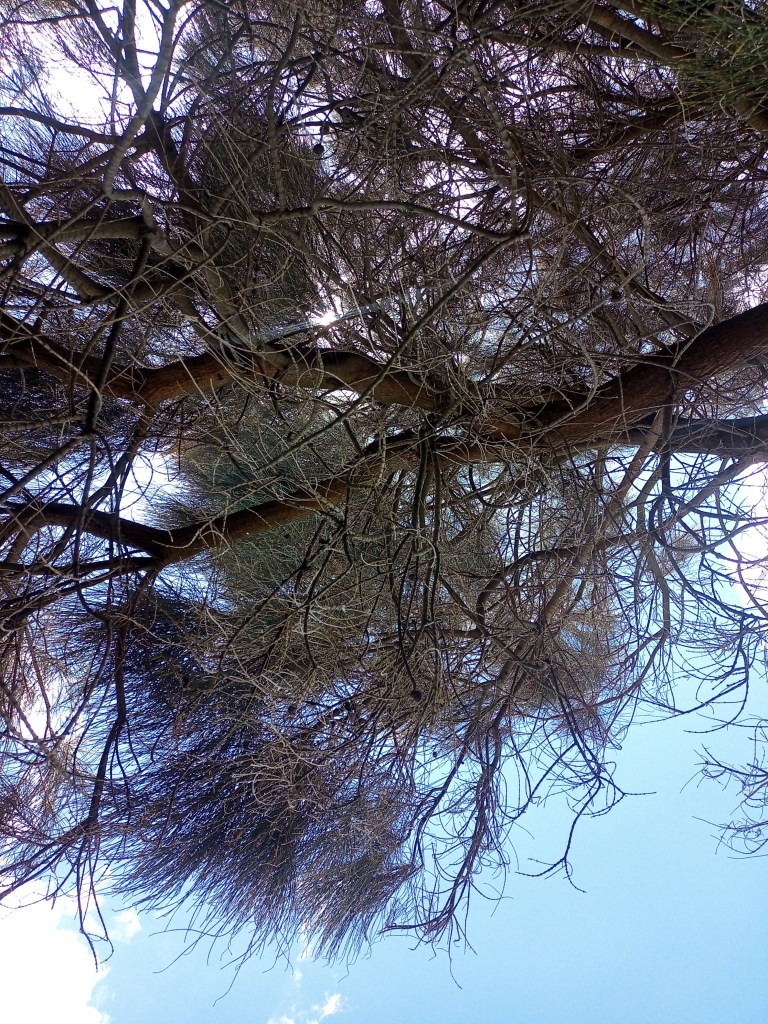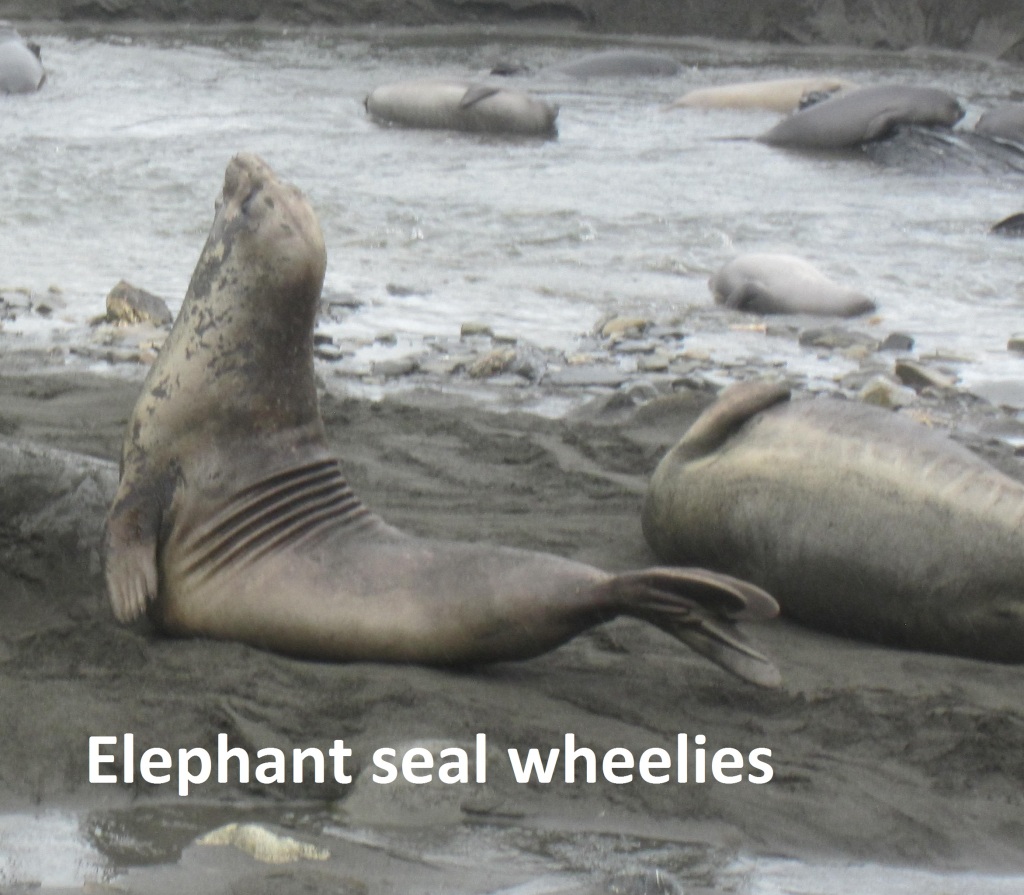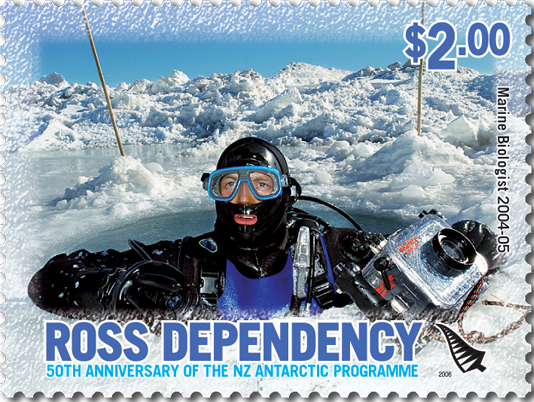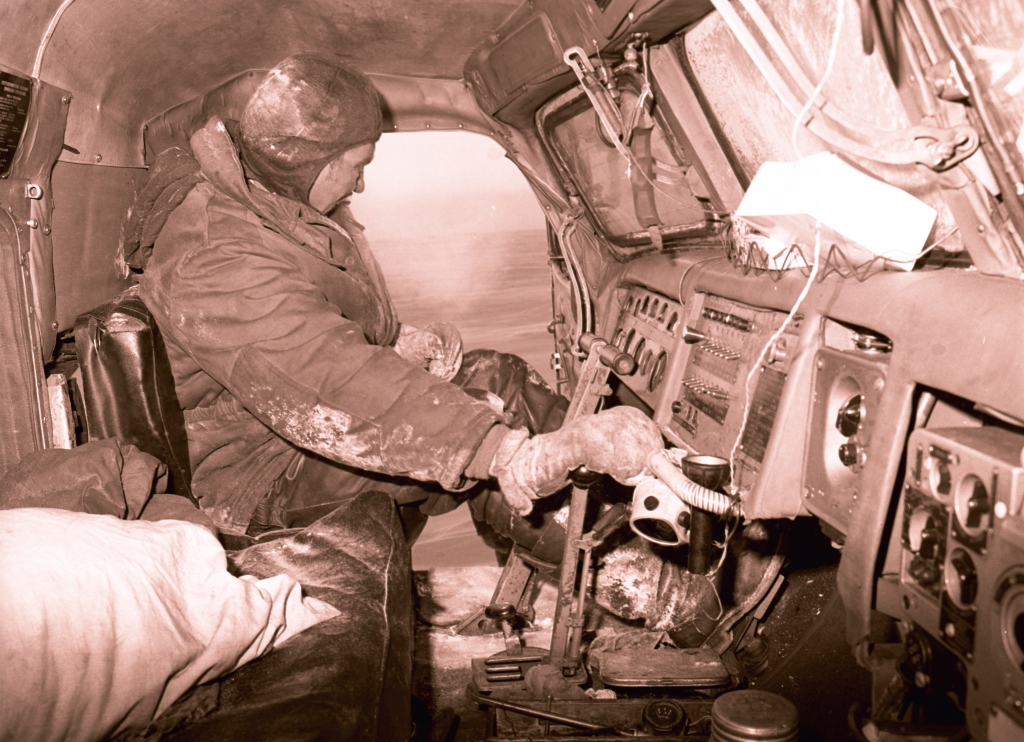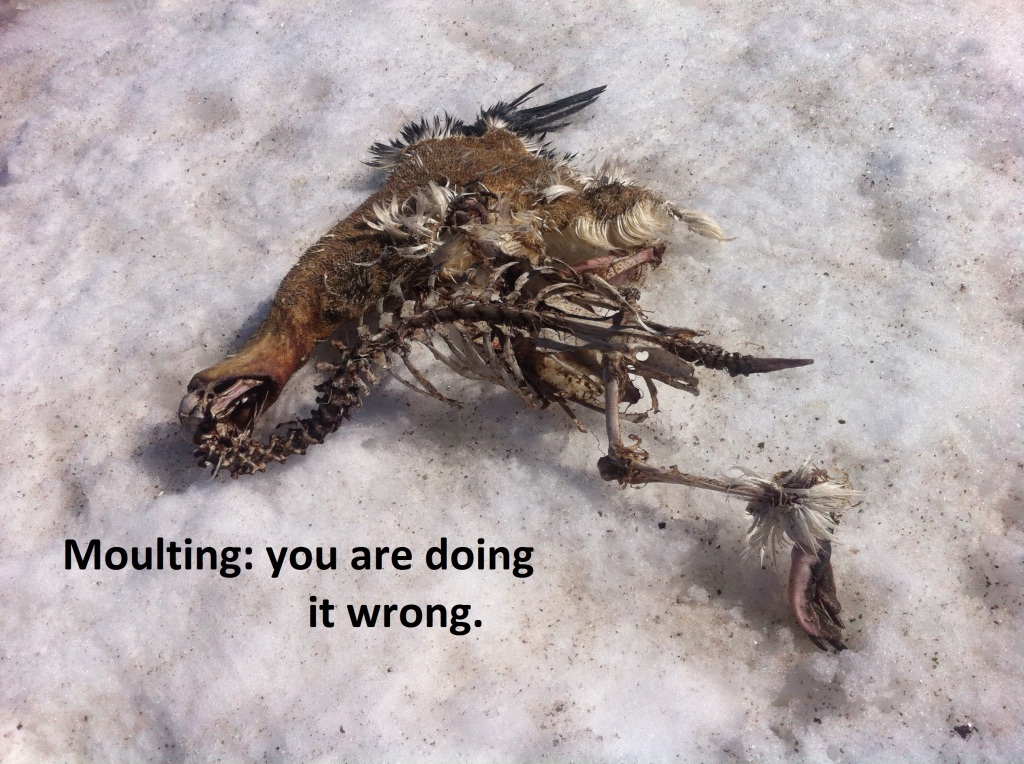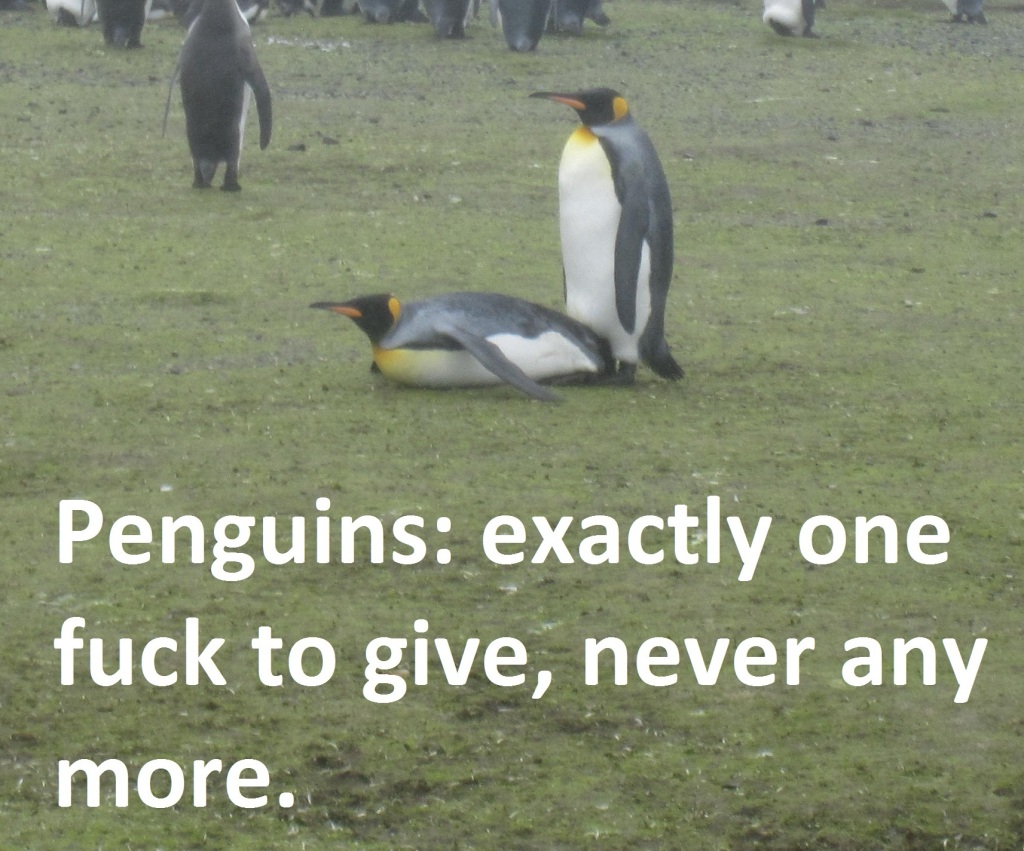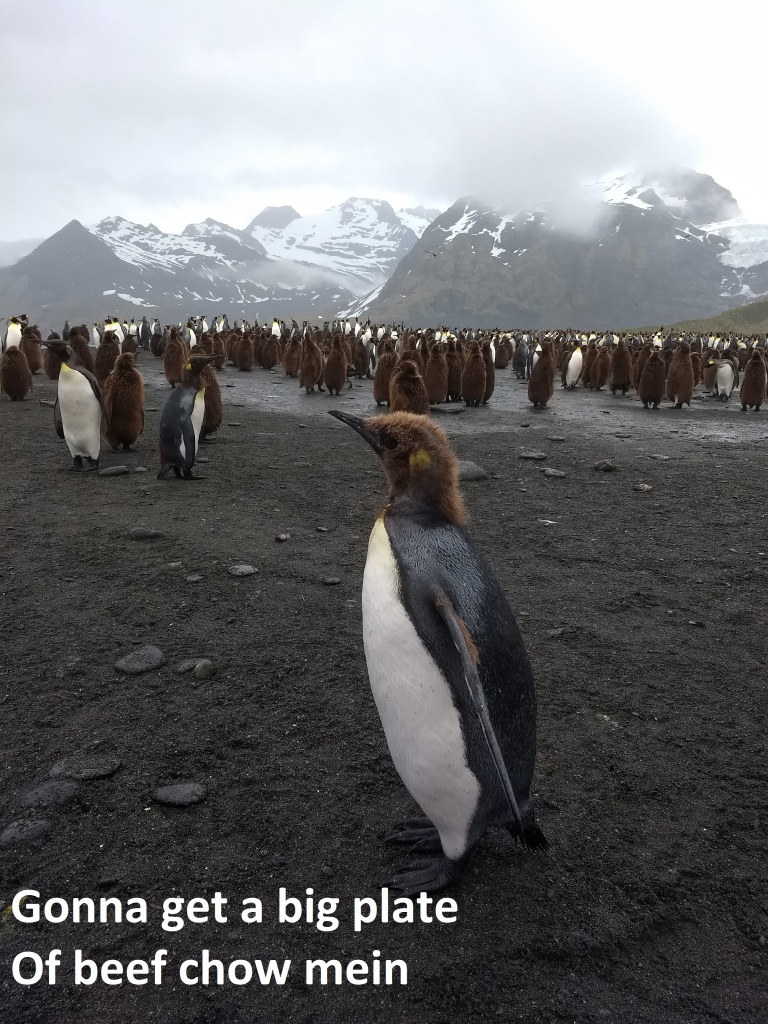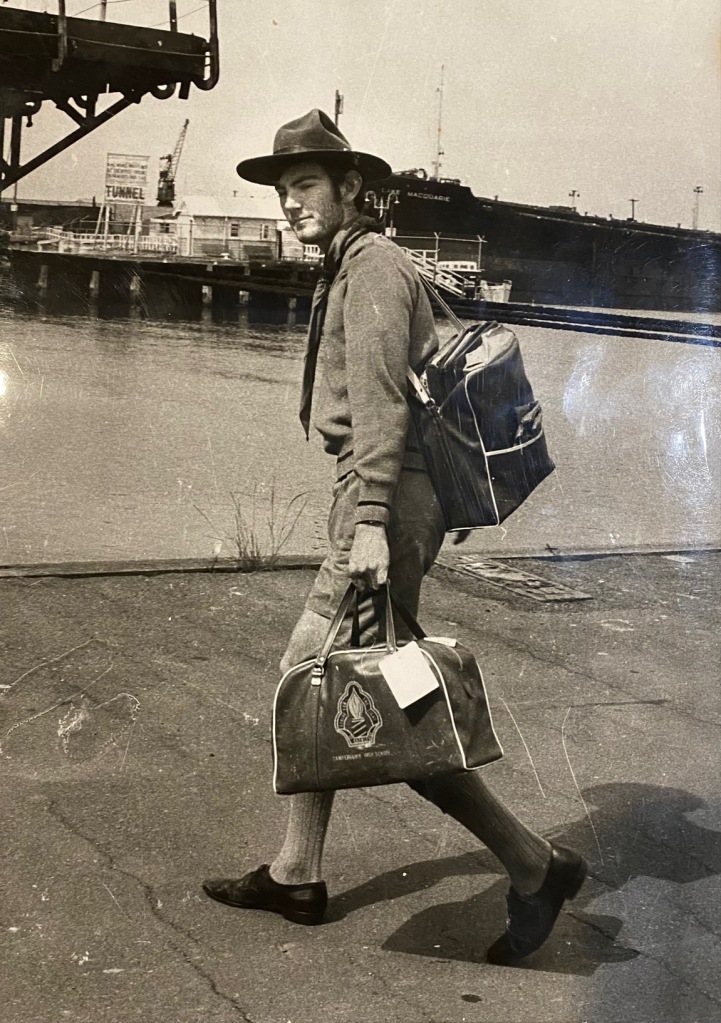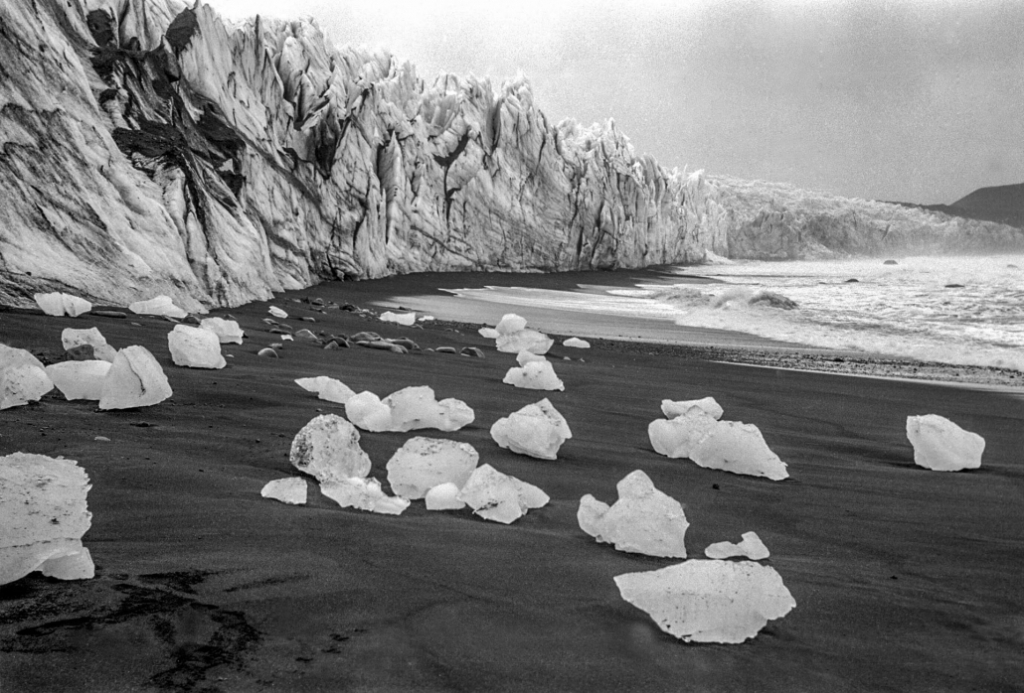The Antarctic Wildlife Colouring Book turns out to be a lot more fun than its snide origins led me to expect.
I’m on notice to expect output from several other quarters as children, children at heart, and grand children of listeners apply themselves to adding chromatic splendour to my drawings.
On that note, I can’t draw well. I used digital photographs of the animals and a data projector to trace the outlines onto the A3 stock. I envy people who can draw images like these and better than these without such camera-lucida trickery, but not enough to actually do anything to improve my own skill set, like taking classes or practicing.
The hourglass dolphin image and the storm petrel pic were deemed sufficiently cool to warrant curation into the McArthur archives. The punkguin received space on the refrigerator.
